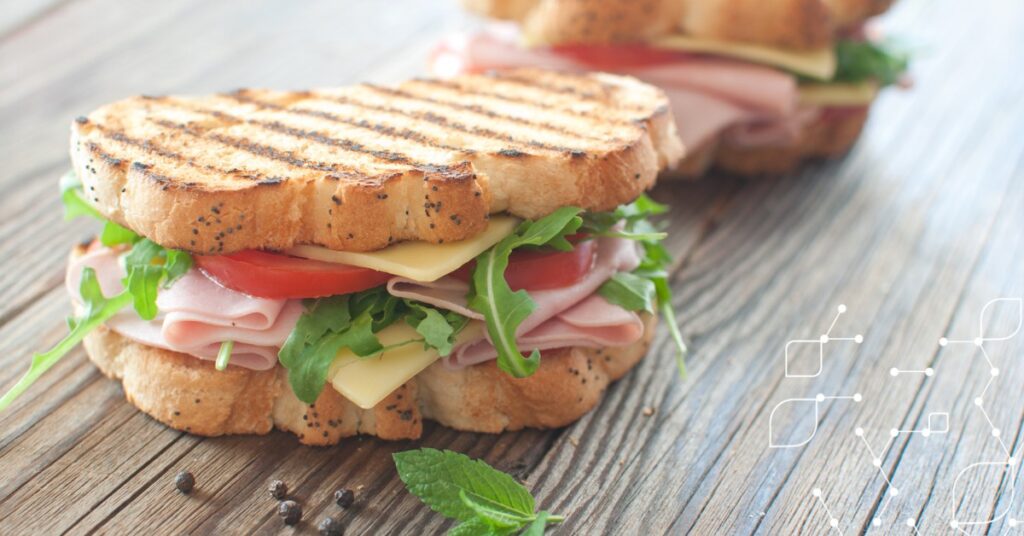
In recent years, there has been a surge in the popularity of in-store kitchens and retail foodservice among grocery retailers. These facilities, located within grocery stores, offer fresh, prepared foods, and have become a significant draw for consumers. In fact, according to a recent report from FMI, 25% of consumers are buying more grocery foodservice items than the previous year, 53% of consumers say grocery deli-prepared foods are good value compared to eating at a restaurant or ordering takeout. This blog will explore why this trend is occurring and how grocery retailers can capitalize on it.
What is an In-store Kitchen?
An in-store kitchen is a kitchen within a grocery store that prepares and sells fresh, ready-to-eat meals, sandwiches, salads, and other food items. Retail foodservice is not a new concept, but in-store kitchens are gaining popularity due to consumers’ changing preferences for convenience and healthier food options.
The Rise of Retail Foodservice and In-store Kitchen
One of the main drivers of the rise in popularity of in-store kitchens is the shift towards healthier eating habits. Consumers are increasingly concerned about the ingredients in their food and want to know what they are eating. In-store kitchens offer an opportunity for retailers to provide healthy food options that meet the demands of health-conscious consumers. Fresh, unprocessed, and locally sourced ingredients can be used to prepare meals, making them more attractive to health-conscious consumers.
Another reason why in-store kitchens are becoming popular is the demand for convenience. Consumers today are busier than ever and are looking for quick, easy, and affordable meal options. This is particularly the case as we see a generational shift in consumers. Gen Z and millennial shoppers in particular are more likely to make separate trips to stores for foodservice.
In-store kitchens offer a solution to this problem by providing a range of ready-to-eat meals and snacks that can be easily purchased and consumed on the go. This convenience factor is particularly appealing to busy professionals, students, and families who want to save time without compromising on quality.
Additionally, during the pandemic we saw the rise of e-commerce and online grocery shopping. While online grocery shopping offers convenience and time-saving benefits, it can also be impersonal and lacks the ability to offer fresh foods, and ultimately, freshness is a differentiating factor. In-store kitchens provide a more personalized, experiential shopping experience, which is a major draw for consumers.
How to Take Advantage of this Opportunity?
So how can grocery retailers go about implementing retail foodservice into their operations? The first step is to determine if it is feasible. In-store kitchens require a significant investment in terms of equipment, staffing, and training. Retailers must also consider whether their store has the physical space required for an in-store kitchen, as well as the demand from consumers in their local market. However, we have also begun to see a rise in off-site commissaries, which may be a solution for smaller retailers who don’t have the physical space.
Assuming that a grocery retailer has determined that an in-store kitchen is feasible, the next step is to identify the right product mix. This can be a challenging process, as it requires balancing consumer demand with operational efficiency. Retailers must consider factors such as menu variety, pricing, and the availability of fresh ingredients.
To ensure that in-store kitchens are profitable, retailers must also focus on operational efficiency. This includes streamlining the supply chain, optimizing fresh food inventory management, and minimizing waste. Retailers must also ensure that their in-store kitchens are staffed with experienced chefs and trained personnel, as the quality of the food and the customer experience will be critical to success.
Technology Makes it Easier

Commissary and store kitchen operations are extremely complex and require a lot of planning. Add-in labor challenges, shifting consumer demands, production schedules, recipe management, and traceability. Luckily, today there are solutions retailers can choose from to help them with their centralized production planning and retail foodservice.
If we look at a sandwich as an example, there are multiple products used to create it (I.e. washed lettuce, sliced tomato, sandwich sauce, slices of cheese, the bread from the bakery). Not only this, but if a retailer slices a whole tomato and only uses two slices for the sandwich, what do they do with the remainder of the product so that it doesn’t go to waste?
While prepared meals can mean increasing margins for retailers, if done incorrectly, it can turn into an opportunity to lose money on costly food waste as well as labor costs. If a product needs to be sold within a few days, the forecasts really need to be as accurate as possible. But forecasts are never perfect. So, it’s a matter of finding the right balance between the risk of both sales and the risk of waste, otherwise known as what we call safety stock. These quantities will vary from store to store and product to product, so retailers need to apply their own targets to reach an optimal balance.
Today, forecast engines leverage the power of AI to not only translate estimated demand for end products into estimated demand for ingredients needed to produce the end product, but they can also be used to manage and co-ordinate production cycles to produce them across different departments.
With the right system, you’ll not only know how many sandwiches to make at what time but will also know what ingredients are necessary from what departments and be able to build out multiple production cycles that start at different times, enabling retailers to accurately forecast labor requirements to optimize limited resources and changing consumer demands.
Plus, with solutions accessible from a mobile device such as a tablet on the store floor, there is no longer the need to run back to the store desktop computer in the office, or run between departments, printing and sharing messy paper sheets.
Final Takeaways
In conclusion, the rise in popularity of in-store kitchens presents a major opportunity for grocery retailers. By offering fresh, prepared foods that cater to consumer demand for convenience and quality, retailers can differentiate themselves from traditional grocery stores and capture a growing market segment.

![[Read next: "Recipe Costing for Grocery Retailers: Boosting Foodservice Profits"]](https://no-cache.hubspot.com/cta/default/21714346/interactive-151423009553.png)
![[Read next: "The Tech-Driven Evolution of Foodservice in C-Stores"]](https://no-cache.hubspot.com/cta/default/21714346/interactive-151423009569.png)






